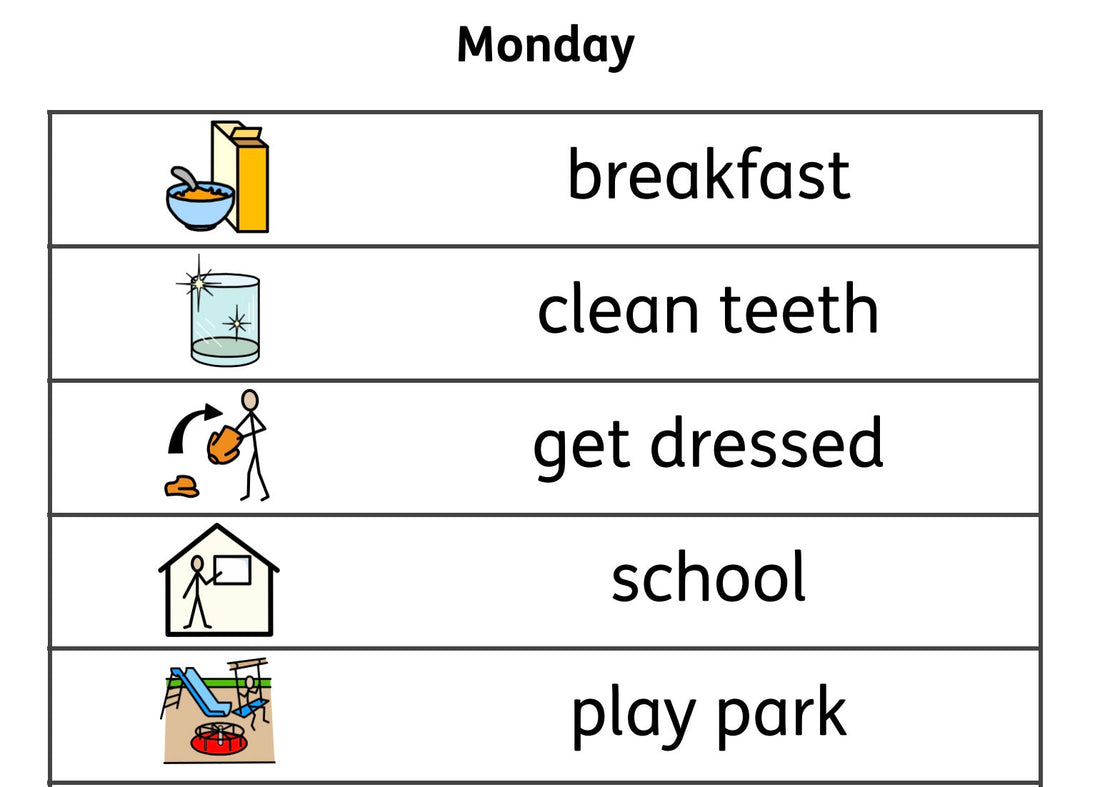
What is a visual timetable, and how does it help autistic children?
Supporting Autistic Children with Visual Timetables and Now/Next Boards
Introduction
For many autistic children, navigating the demands of daily life can be overwhelming. Changes in routine, unexpected transitions, and difficulty processing verbal instructions can create anxiety and lead to behavioural challenges. Visual supports like visual timetables and now/next boards are powerful tools that can help reduce this stress, increase independence, and support communication and understanding.
What Are Visual Timetables and Now/Next Boards?
Visual timetables use pictures, symbols, or written words (depending on the child’s needs) to show a sequence of daily activities or events. They give children a clear overview of what will happen and in what order. Children can remove the visuals from the timetable as the activities are completed, helping them understand the day is progressing.

Now/Next boards are a simpler version, showing just the current activity (“Now”) and the upcoming one (“Next”). These are especially useful for younger children, or for those who find too much information overwhelming.

Why Are They Helpful?
1. Reduce Anxiety and Increase Predictability
Autistic children often thrive on routine and predictability. Visual timetables provide a clear structure for the day, helping to reduce anxiety around what is going to happen next. Knowing what to expect can make transitions between activities smoother and less stressful.
2. Support Understanding and Communication
Many autistic children are visual learners. They may find it easier to understand and process information when it is presented visually rather than verbally. Visual timetables and now/next boards take away the need to rely solely on spoken language, which can be particularly helpful for children with language processing difficulties or limited verbal communication.
3. Encourage Independence
Visual supports allow children to follow routines more independently. Instead of needing constant verbal prompts from adults, they can refer to their timetable or board to see what to do next. This can foster a greater sense of control and autonomy, which is empowering and supports self-esteem.
4. Facilitate Transitions
Transitions – even small ones – can be particularly difficult for autistic children. A now/next board helps by preparing them for what’s coming, making changes feel more manageable. For instance, showing that “Now: Playtime” will be followed by “Next: Snack” can help a child mentally prepare for the shift from one activity to another.
5. Aid in Behaviour Regulation
When children understand what is expected and what will happen next, they are less likely to become distressed or dysregulated. Visual timetables can help prevent meltdowns that may result from unexpected changes or confusion.
Tips for Using Visual Supports Effectively
- Be consistent! – Use the timetable or board regularly so the child learns to rely on it.
- Personalise it – Use pictures or symbols that are meaningful and appropriate for the child’s age and level of understanding.
- Review together – Talk through the timetable at the start of the day, and refer to it throughout.
- Prepare for changes – If something in the routine needs to change, use an 'oops!' visual to show and explain this as clearly as possible.
- Celebrate progress – Praise the child for using the timetable or transitioning between activities successfully.
In Summary
Visual timetables and now/next boards are simple yet effective tools that support autistic children in many ways. By providing structure, reducing anxiety, and supporting communication, these visual aids can make a big difference in a child’s ability to engage with their day, participate more fully, and develop confidence and independence.
